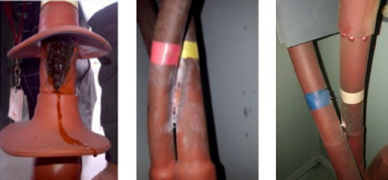Real-time monitoring reduces impact of COVID-19
Juan Labuschagne of Martec, the Pragma Group’s condition monitoring company, describes how IIoT (Industrial Internet of Things) technology and the use of smart sensors has helped to optimise on-site maintenance delivery and limit the adverse effects of the COVID-19 Pandemic on plant operations.
Since the arrival of COVID-19 we have experienced immensely negative impacts on our economy and infrastructure. Various industries and sectors have undergone massive operational changes, with the focus on reducing expenditure at the forefront of most management strategies. Companies have been forced to reduce staff either due to financial constraints or the operational risks of spreading the disease.
Compliance with compulsory restrictions or scaling down staff result in various complications as regards the reliability of costly infrastructure: reduced maintenance budgets; reduced maintenance staff and tasks; delays in critical maintenance activities; and limited contractor availability, for example. All these factors significantly increase the risk of failure of plant-critical equipment
To keep unexpected failures to a minimum, planned and scheduled maintenance were traditionally the ultimate strategies. The industry has since moved on, however, and a new ‘predictive maintenance’ strategy is being born, thanks to smart sensors and devices with remote in-time/real-time monitoring capabilities. In this day and age, most software and machinery suppliers provide an open type of architecture to enable the flow of communication and to enable integration with different processes. This new revolution (Industry 4.0) aims at industrial digitalisation and the networking of devices. This allows mass data to be stored so long-term and accurate observations can be accumulated using complex analytical methods.
The ability to use this technology to make informed and accurate decisions during the restrictions of the COVID-19 pandemic resulted in various advantages, such as, reduced staff requirements to carry out physical condition monitoring tasks; effective maintenance planning with contractors and staff; increased production time; increased reliability of plant equipment; and effective resource and material requirements.
As an example, a large mining company was experiencing problems with unexpected failures on its electrical reticulation equipment, especially on medium and high voltage cables and terminations. Unexpected failures, even with only a few hours of downtime, at concentrator plants can result in the loss of millions in revenue. The decision was made to place smart sensors and devices on the cables to monitor partial discharge (PD) activity in real-time.
Partial discharge is an electrical phenomenon that causes deterioration of the electrical characteristics of insulation material within MV and HV equipment. PD activity can be detected using ultra high frequency (UHF) sensors and monitoring devices that collect data and process it so that engineering analysis becomes possible and defects identified. The most significant trends for PD analysis are the intensity of the pulse called the Qmax (mV) and the repetition rate of this pulse per power cycle, called the pulse rate (PPS). When the PPS starts to trend upward, the first alarm is raised and the customer notified. Depending on the type of insulation system and the PD characteristic involved, a decision can be made to inspect the specific equipment for defects or to conduct further advanced online or offline testing to identify the problem.
PD problems can cause massive damage to surrounding equipment such as breakers, panels, transformers and motors, which get damaged due to cable termination failures. This results in considerable amounts of downtime. By applying modern real-time/in-time monitoring and analysis techniques, repairing a problematic termination can take as little as four hours, and this need only affect one specific power feeder to the plant equipment. Substantial revenue savings can result, particularly when taking into account the advantages of a properly planned outage that best suits plant availability.
Regarding the capability of using real-time monitoring, data analysis and trending on an IOT platform, the possibilities are endless. Customers can fully customise the views and alarm limits of any data they want to trend from any type of smart sensor, database or SCADA platform on the plant. Martec’s team of capable individuals and engineers can then analyse any triggered alarms and write informative flash reports to initiate corrective actions.
The IIOT will definitely be part of our ‘new normal’ going forward. The significance of having all the data in real time, with customisable alarm settings, makes every intervention much more accurate and informative, allowing us to better understand trending behaviours and to identify defects quickly and accurately.


Left: A PD graph on medium voltage (MV) terminations trended over time. The escalation in Qmax (mV) as the resistance of the insulation deteriorates is evident until failure occurs, which trips the supply voltage. Right: Typical partial discharge (PD) failures owing to inadequate clearance between the unscreened areas of the cable termination. PD causes the build-up of a white acid-type powder due to the ionisation of the air around the activity.
This article was first published on MechChem Africa, Sept – Oct 2021 Edition